Text
Terp/Thorp/Wierde/Warft/Værft

Most commonly known as “Terp”, by origin a Frisian word, Terps are actually known in a few places. Hang on tight, this is a long one.
The water rich lands of Dutch provinces Zeeland/Frisia (Terp) and Groningen (Wierde) - German regions Nordfriesland and Ostfriesland (Warft) and southern Denmark (Wærft) were in need of such constructions for basic quality of life.
Because the tides could freely enter the lower lands beyond the shoreline, life was to be lived intermittently. When the land was dry, sheep could graze the salt marsh. When water rose, people would retreat to the Terp.
A Terp can be made up out of a single church or farm/house to an entire small village. Concentrations of small Terps making up a village also exist. They are often surrounded by a salt marsh rampart (Kwelderwal).
Terps were made by plaggen. The top of sandy soils was taken out in little cubes, including the vegetation. The plag was then dried and compacted and stacked on top of each other, which causes an artificial hill allowing to build on.
Terp is also the Old-Frisian word which originates the Dutch word for village. Frisian culture allowed to spread because of their specialization in sheep’s wool. With most agricultural crops not being suited for salt marshes, and with the land flooded half of the day, lots of time was spent in producing high quality and highly sought after wool. This made the Frisians and especially the Terp people very rich, as seen in treasures, burials and clerical art.
Lots of Terps have been destroyed for peat mining or lost after abandonment.
Image above: Hogebeintum (Hegebeintum (Frisian), formerly known as Westerbintheim).
The largest known Terp in the Netherlands and Germany with 8,80 m above sea level.
Central is the church, on the right the historic village, the sheep pastures during floods and the encircling salt march rampart. Everything outside the rampart used to flood.
#frankish#merovingian#viking archaeology#archaeology#carolingian#charlemagne#field archaeology#viking mythology#merovingian archaeology#germanic mythology#norse mythology#anglo saxon#viking#field archaeologist#frisian#odin#vikings#germanic#germanic folklore#germanic archaeology#wodan#anglo saxon archaeology#history#jewelry#norse
30 notes
·
View notes
Text
Lunulae

Lunulae are crescent moon shaped pendants from the Roman Empire. They are -according to statues- pendants which are worn by women. Their use is not based on a set religious rule or idea. They are more thought of as a personal lucky charm.
Since both Romans and Merovingians had a “religion” based on animistic foundations, Gallic and early medieval people saw no reason to discontinue the wear of lunula pendants.
Their execution changed from recognizable crescent moon shapes to a Germanic variant. Most visually, they become wider to allow the use of cloisonné, filigree or kerbschnitt.
Image: buste of a child (Roman-Gallo Roman)
Rijksmuseum van Oudheden, Leiden, Zuid-Holland - The Netherlands.
Museum nr. VF 122
Found in: Bunnik / Vechten, Utrecht - The Netherlands
#frankish#merovingian#viking archaeology#archaeology#carolingian#charlemagne#field archaeology#viking mythology#merovingian archaeology#germanic mythology#norse mythology#anglo saxon#viking#field archaeologist#frisian#odin#vikings#germanic#germanic folklore#germanic archaeology#Ancient Rome#western roman empire#roman empire#wodan#anglo saxon archaeology#history#jewelry#norse
16 notes
·
View notes
Text
A few thoughts…
I’m so conflicted about this. There are different ways to include characters which are people of color into “Viking” series and movies.
Yes trade and travel were the basis of everything, but if you want to diversify a cast, try to give credit to actual cultures from the time. The Arabs were crucial in Viking welfare because all silver and gold was imported through the Middle East. Ahmad Ibn Fadlan, a Baghdadi historian is credited as the only historical source about the Vikings that is trustworthy. Nordic people went to the Eastern Roman Empire to work as elite guards and soldiers. Scandinavians in modern day Turkey.
It’s very likely there was contact with tradesmen from the entire Mediterranean (and Africa?) so they would likely have known each other’s existence. If not, they would have met through Arab tradesmen as cities like Baghdad connected the known world.
Proof of this can be found in artifacts such as an East Asian Buddha statuette found in Birka, Sweden.
I would love to see things like things happen in Hollywood. You’ll have the diversity AND you can give credit to the cultures equally responsible for each other’s golden age.
#frankish#merovingian#viking archaeology#archaeology#carolingian#charlemagne#field archaeology#viking mythology#merovingian archaeology#germanic mythology
13 notes
·
View notes
Photo
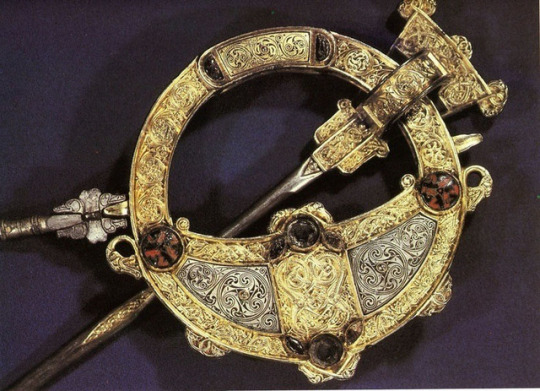

The Tara Brooch is a Celtic brooch of the pseudo-penannular type, made in 650 to 750 AD, in Ireland…. Ancient beautiful art…. How…?
432 notes
·
View notes
Text
Hällristningar / Petroglyphs
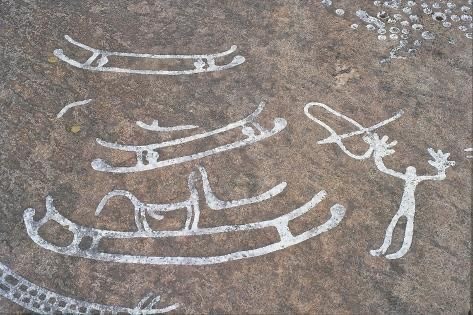
Petroglyphs have been made all around the world and in different eras. The word literally means “stone carving”.
Nordic petroglyphs are usually from the Bronze Age and are also called Hällristningar.
Some see part of the engravings as early runic symbols, but this theory is /can not be proven. Various meanings have been attested, such as territorial markings, recording (historical) events or tales, or possibly part of religious experience.
Many Nordic carvings have been painted for visibility reasons. None of these have been proven to be colored in at the time they were made.
Hällristningar are not part of the Viking age, but are often included into the Viking age by popculture. Examples of this are combining styles, decorations and time periods into tattoos or fake facts online.
Image: Tanum Petroglyphs
Found in: Litsleby, Västra Götaland - Sweden
#frankish#merovingian#viking archaeology#archaeology#carolingian#charlemagne#field archaeology#viking mythology#merovingian archaeology#germanic mythology#norse mythology#anglo saxon#viking#field archaeologist#frisian#odin#vikings#germanic#germanic folklore#germanic archaeology#wodan#anglo saxon archaeology#history#jewelry#norse#nordic bronze age#Bronze Age
29 notes
·
View notes
Text
Merovingian Era Terminals

A terminal is the decorative end of a brooch. Brooches come in many varieties and sizes, but always in two parts, the head: which is where the needle hinges, and the foot: where the needle is secured behind a hook or curved heel.
The head is often very eyecatching and well decorated. The foot is usually longer than the actual needle and most often tapers to the end, that little tapering end is the terminal.
Roman (military) brooches usually have some kind of stud or geometric element, while Merovingian and Anglo-Saxon brooches have rounded ends which are almost always shaped like a stylized animal head.
There are discussion amidst academics as to what animal is supposedly portrayed, but there is no consensus. Animal head terminals are found all over Europe.
Image: Anglo Saxon terminal (from unidentified larger artifact) from the Staffordshire Hoard. Photographed by “PA” for The Guardian (24/09/2009)
#frankish#merovingian#viking archaeology#archaeology#carolingian#charlemagne#field archaeology#viking mythology#merovingian archaeology#germanic mythology#norse mythology#anglo saxon#viking#field archaeologist#frisian#odin#vikings#germanic#germanic folklore#germanic archaeology#wodan#anglo saxon archaeology#history#jewelry#norse
21 notes
·
View notes
Text
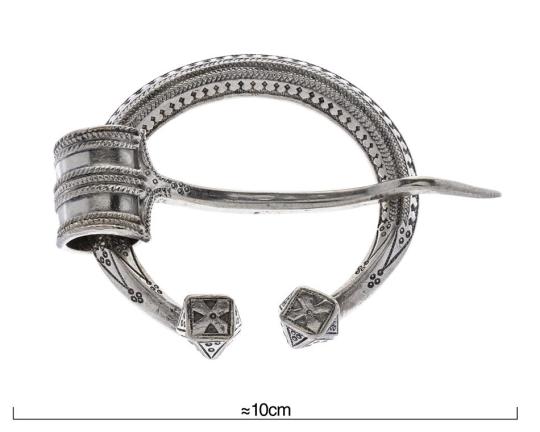
Silver ring brooch, Sweden, 800-1100 AD
from The Historiska Museen, Sweden
223 notes
·
View notes
Text
The Langobards

The Langobards/Lombards/Longobards are an Italic-Germanic tribe with origins in southern Scandinavia around the first centuries B.C. and A.D.
Their steady migration southward can be retraced by archaeological artifacts, which show their Scandinavian origin.
Their early connections to (the geographical city of) Rome made them very influential in the Western Roman world; on financial, military, religious but also law practice and kingship levels.
The Lombards were quickly christened and were the founding fathers of many religious institutions in northern Italy, ruled Italy, and adapted/adopted Roman Law, making for a culturally rich period. Their capital Pavia is located in the Italian province of Lombardy, named after, you guessed it.
It has to be said (it sounds like a fake fact but is not) that their name means “Long Beards”. In many European languages the descriptive name can be heard in “Langobard” also written as “Longobard”.
Image:
Langobardic radiate headed bow brooch
Found in: Chiusi - Tuscany, Italy
#frankish#merovingian#viking archaeology#archaeology#carolingian#charlemagne#field archaeology#viking mythology#merovingian archaeology#germanic mythology#lombards#Lombardi#lombardia#Lombardic#longobardi#Langobards#norse mythology#anglo saxon#field archaeologist#viking#frisian#odin#vikings#germanic#germanic folklore#germanic archaeology#wodan#anglo saxon archaeology#history#jewelry
137 notes
·
View notes
Text
Bonus post: Beowulf

The hero Beowulf, King of the Gauts is -with near certainty- a fictional person.
His name is a first point of struggle. There is general consensus that wulf means literally “wolf”. But depending from which Indo-European language one starts deconstruction, Beo can mean a bunch of different things.
According to the tale, Beowulf is the son of a warlord from the Geats/Gauts. They are believed to be from the Swedish geographical area Götaland (not to be confused with the island Gotland or the Goths).
Beowulf’s heroism is compared to Siegfried in the tale itself. Siegfried is the hero of Das Nibelungenlied and modeled after historical figure Theodorik. Both Siegfried and Beowulf (who attempts to) kill a dragon.
Image credit: “Grendell’s mother drags Beowulf to the bottom of the lake” by Henry Justice Ford
Illustration for “The Red Book of Animal Stories” by Andrew Lang 1899.
#frankish#merovingian#viking archaeology#archaeology#carolingian#charlemagne#field archaeology#viking mythology#merovingian archaeology#germanic mythology#norse mythology#anglo saxon#viking#field archaeologist#frisian#odin#vikings#germanic#germanic folklore#germanic archaeology#beowulf#wodan#anglo saxon archaeology#history#jewelry#norse
34 notes
·
View notes
Text
The Beowulf Epic

The Beowulf Epic is one of the most important literary works in the development of the English language. The language used is 10th century but it includes many words which are prominent for the 8th century, proving the tale is at least centuries old by the time this version was written down.
Germanic Heroic Myth is a genre on its own, with Beowulf fitting perfectly within this narrative. However, other famous examples of Germanic literature such as Das Nibelungenlied and the Eddic Texts were all written down in the 13th century.
Interestingly, the tale was published in 1815, which was also the time its now common name was introduced. Before the tale was dubbed Beowulf, it remained nameless all those centuries.
Despite the tale being as much a work of fiction as it can get, it gives seemingly unimportant details about life in the 800s, such as a mention of how the Danish guard their coasts on horseback.
Image credit: “Cotton MS Vitellius A. xv.” (Nowell Codex), 129r by an unknown scribe.
First page of the so-called Beowulf Poem. Manuscript located in the British Library
#frankish#merovingian#viking archaeology#archaeology#carolingian#charlemagne#field archaeology#viking mythology#merovingian archaeology#germanic mythology
60 notes
·
View notes
Text
I had two days of from work and managed to visit my local Gallo-Roman museum (the name is actually deceiving as they focus on the area between Neanderthals and Merovingians). Here are some of the things I saw!



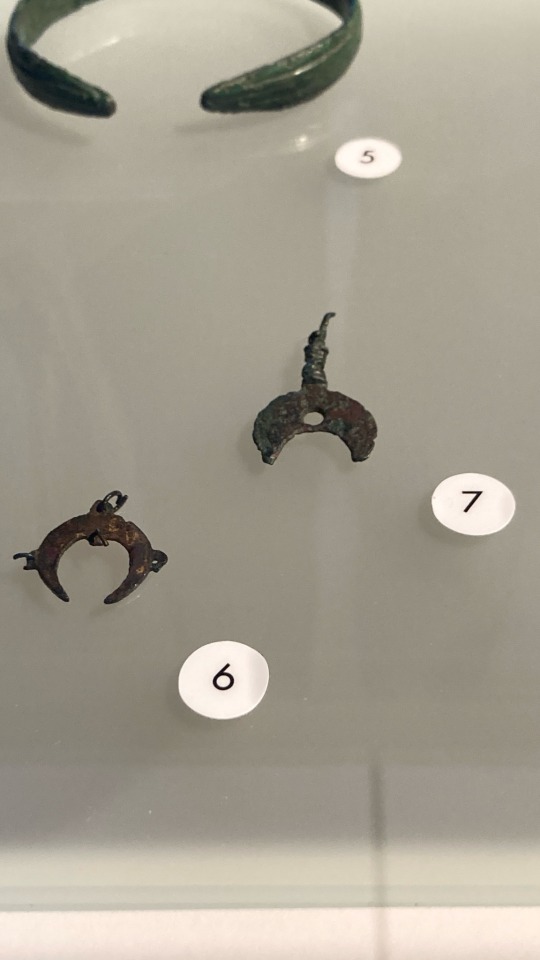


1) Gallic Torcs in gold
2) a complete Dodecahedron in bronze
3) Late Roman dress pins in bronze
4) Lunulae, moon shaped pendants, generally believed to be a lucky charm
5) a Merovingian bucket, a funerary gift
6) late Roman keys in iron
#frankish#merovingian#viking archaeology#archaeology#carolingian#charlemagne#field archaeology#viking mythology#merovingian archaeology#germanic mythology#roman archaeology#rome#ancient rome#western Roman Empire#ravenna#Gaul#gaulois#Celtic#Hallstatt#norse mythology#anglo saxon#viking#field archaeologist#frisian#odin#vikings#germanic#germanic folklore#germanic archaeology
13 notes
·
View notes
Text
Belt Fitting/ belt mount
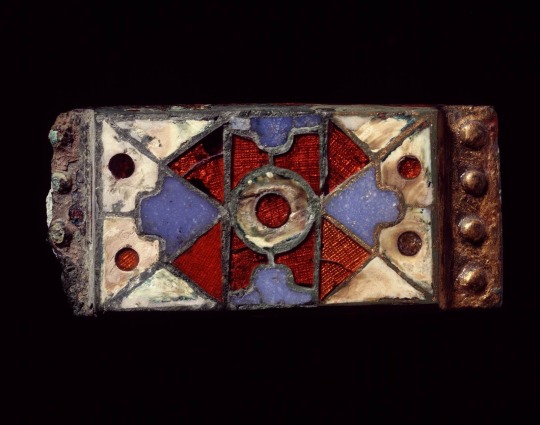
Merovingian dynasty Europeans loved to wear belts. They were today’s purses and held plenty of people’s personal belongings and hygiene tools. It’s possible that a variety of materials were used as belts, such as simple ropes from natural material, tablet woven belts, but most known are leather belts.
The leather has decayed, but it’s decorations show the owner’s wealth. Leather belts were decorated with metal mounts, in the case of belts more often called “fittings”. These fittings include thick pins on the back which allows for a secure fit.
Most often a belt consisted of a metal buckle, with the other end being decorated with another, often matching in style fitting. These often have different shaped, which may indicate that the edges of the leather were shaped to taste. The most elaborate belts consist of fittings all over the length of the belt.
The example above is a rarer decoration style, with enamel used instead of a full metal relief decorated or garnet decorated fitting. Despite being found in a grave dated to 630-640, the style may indicate that the fitting is actually older, most likely being passed on from one generation to the next, possibly originating from the 500-550’s.
Rijksmuseum van Oudheden, Leiden, Zuid Holland - The Netherlands
Museum nr. h.1913/11.89
Found in Rijnsburg-Katwijk, Zuid Holland - The Netherlands
#frankish#merovingian#viking archaeology#archaeology#carolingian#charlemagne#field archaeology#viking mythology#merovingian archaeology#germanic mythology#norse mythology#anglo saxon#viking#field archaeologist#frisian#odin#vikings#germanic#germanic folklore#germanic archaeology#dress history
45 notes
·
View notes
Text
Bonus post: The Sutton Hoo rivets

Archaeology pioneer Basil Brown standing in the Sutton Hoo ship. No actual wood has survived. The whole lay-out of the ship has only survived because of the rivets having remained in their original place all those centuries.
The rivets can be seen as black dots on the white (mother soil) background. There has been no other ship from the Vendel age excavated that is so well preserved without actual wood surviving. Grave robbers and the wood collapsing on itself usually leave plenty of rivets out of place.
Image credit: Basil Brown in the Sutton Hoo ship, 1939. The British Museum and the Sutton Hoo Ship’s Company.
#frankish#merovingian#viking archaeology#archaeology#carolingian#charlemagne#field archaeology#viking mythology#merovingian archaeology#germanic mythology#vendel period#Vendel era#sutton hoo#Sutton Hoo ship#Basil Brown#norse mythology#anglo saxon#viking#field archaeologist#frisian#odin#vikings#germanic#germanic folklore#germanic archaeology#wodan#anglo saxon archaeology#history#jewelry#norse
15 notes
·
View notes
Text
Ship rivets

Rivets are iron nails which are used to construct the hull of wooden boats. Vertical wooden planks are hammered onto the wooden frame of the ship. The nails are usually longer than the planks are thick, which causes them to stick out. Inside the boat the ends are hammered back into or laying flat against the wooden plank, preventing injury. This gives the nail a key or hook like shape.
Wood usually degrades on land leaving us with very little information on ship construction or even the shape and use of ship types. However in undisturbed conditions, the shape of the ship can be preserved because the rivets will not move out of place.
Archaeologically, this makes ships very hard to excavate. Its absolutely important to not accidentally remove rivets from their original location, and on top of that there is a need for absolutely accurate registration of the rivets’ locations. 3D imaging has made this job a lot easier, but excellent care and caution is absolutely necessary.
I will never forget my professor showing us a picture of Basil Brown in the Sutton Hoo ship, with only the rivets showing the boat and him nostalgically stating “this is where modern archaeology was invented. This is the most beautifully executed dig ever. No one will ever match this.”
The British Museum, London - United Kingdom
Museum nr. 1891,1021.87
Found in Lilleberge, Nord-Trøndelag - Norway
#frankish#merovingian#viking archaeology#archaeology#carolingian#charlemagne#field archaeology#viking mythology#merovingian archaeology#germanic mythology#norse mythology#anglo saxon#viking#field archaeologist#frisian#odin#vikings#germanic#germanic folklore#germanic archaeology#wodan#anglo saxon archaeology#history#jewelry#norse
21 notes
·
View notes
Text
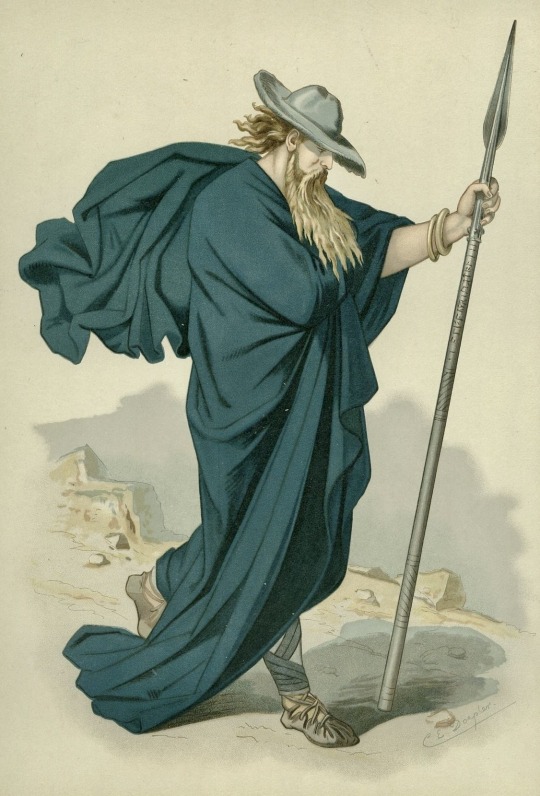
Wotan by Carl Emil Doepler, illustration from Der Ring des Nibelungen von Richard Wagner: Figurinen Erfunden und Gezeichnet (The Ring of the Nibelung by Richard Wagner: Figurines Invented and Drawn) (1889)
480 notes
·
View notes
Text
Trossinger Leier

This is the most intact music instrument from the Germanic age ever found. The Trossinger Lyre is wonderfully preserved. The entire wooden frame is complete and plenty of carved decorations can be seen on the lyre.
The body of the instrument is made from maple wood, although oak, ash tree and combinations of those wood types were used. The English Prittlewell lyre was made from different wood types, damaged during its life and repaired with metal.
There is not one umbrella name for lyres of the Germanic age. Names such as “German, Viking, Anglo-Saxon, Germanic, … lyres” are all used for these instruments.
Although the modern word variations of lyre (English), lier (Dutch), leier (German), lyra (Swedish) all sound like they are derived from a common Indo-Germanic word stem, the classic tale of Beowulf names a “hearpe”, suggesting that they mean the same instrument we call harps now, but the description given in the saga is matching lyres instead of harps.
Around thirty lyres have been found all over northern and Western Europe in various styles of execution and level of preservation. Their height in popularity is dated around 650 AD.
Archäologischen Landesmuseums, Konstanz - Baden-Württemberg, Germany
Museum nr. Unknown
Found in Trossingen, Landkreises Tuttlingen, Schwarzwald-Baar-Heuberg, Baden-Württemberg, Germany
#frankish#merovingian#viking archaeology#archaeology#carolingian#charlemagne#field archaeology#viking mythology#merovingian archaeology#germanic mythology#norse mythology#anglo saxon#field archaeologist#frisian#odin#viking#vikings#germanic#germanic folklore#germanic archaeology#wodan#anglo saxon archaeology#history#jewelry#norse#music history#ancient instruments#ancient music#Beowulf
35 notes
·
View notes
Text
Germanic shields
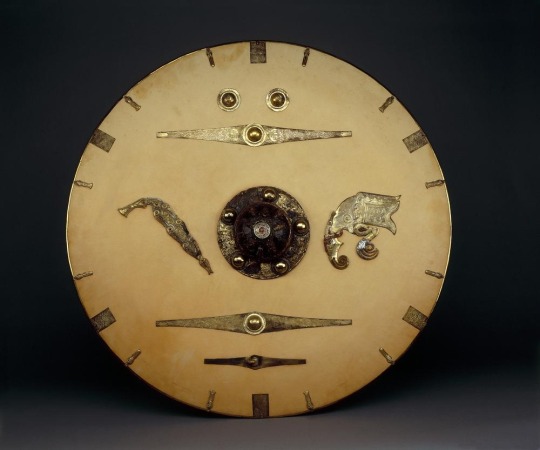
Shields are sometimes found in men’s graves around Europe. They are only identified by the remaining shield boss.
A shield boss is a heavy metal stud in the centre of the shield. It’s both used to defend against sword strikes but also, combined with the fighter’s own weight to strike into an opponent. The shape of the shield boss may vary.
Additional decorations can be found. The shield above was found at the Sutton Hoo site and was most likely a ceremonial object. It is suspected that they were meant to evoke power, protection and possibly used to pray for a wanted victory. The bird on the shield is very similar to Vendel brooches, and in this case the use of birds is a clear reference to Odin, the god of rage and war.
The British Museum, London - United Kingdom
Museum nr. 1939,1010.94
Found in Sutton Hoo (Woodbridge), Suffolk - United Kingdom
#frankish#merovingian#viking archaeology#archaeology#carolingian#charlemagne#field archaeology#viking mythology#merovingian archaeology#germanic mythology#norse mythology#anglo saxon#field archaeologist#frisian#odin#viking#vikings#germanic#germanic folklore#germanic archaeology
33 notes
·
View notes